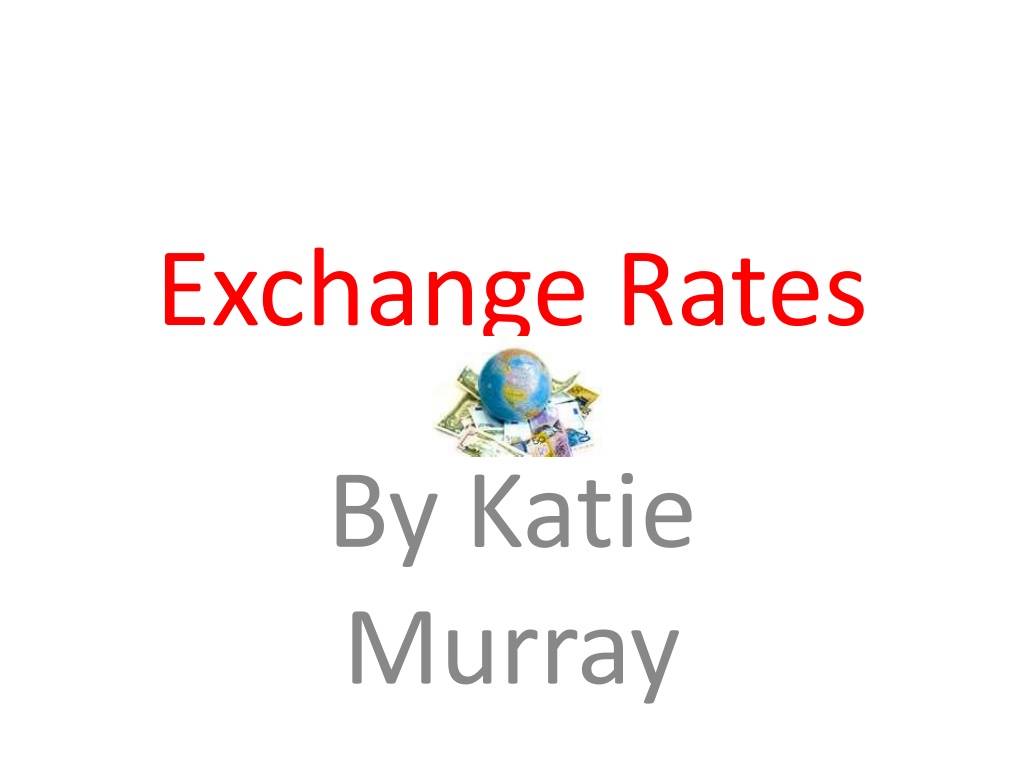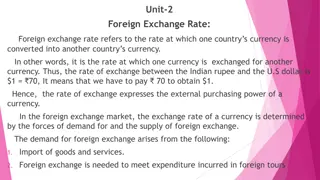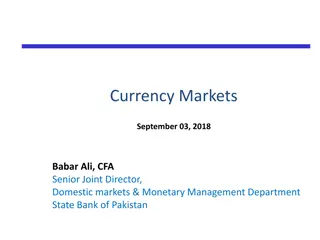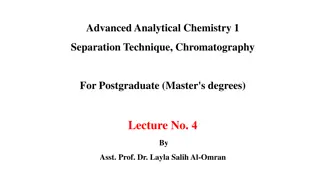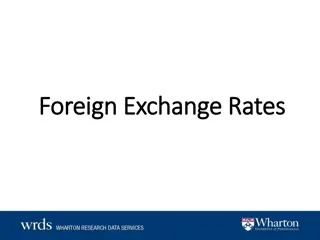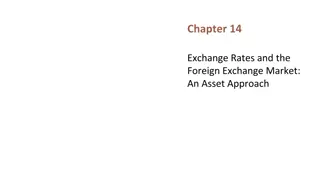Understanding Exchange Rates and Factors Influencing Them
Exchange rates are the price of one currency in terms of another, influenced by factors like purchasing power parity theory, balance of payments, speculators, and multinational companies. While the theory has its limitations, exchange rates ultimately depend on the interaction of supply and demand in the global market.
Download Presentation

Please find below an Image/Link to download the presentation.
The content on the website is provided AS IS for your information and personal use only. It may not be sold, licensed, or shared on other websites without obtaining consent from the author. Download presentation by click this link. If you encounter any issues during the download, it is possible that the publisher has removed the file from their server.
E N D
Presentation Transcript
Exchange Rates By Katie Murray
Def: The price of one currency in terms of another
What determine the rate of exchange? No. 1 The purchasing parity theory States that in a free market the rate of exchange of currency will settle at a point where internal purchasing power = external purchasing power.
What does this mean ? It means that any given quantity of a country currency will buy the same amount of goods whether it is spent home or abroad E.g.. If a make-up kit costs 20 euro in Ireland and 10 dollars in America than the rate of exchange is 2 = $1
Faults of theory Doesn t take into account the extra cost of transporting Doesn t take into account that some economic goods aren t tradable e.g. Housing There is not free trade between many countries and most countries operate forms of protectionism
No 2 The Balance of payments If a value of a country s exports is greater than the value of it s imports, the price of the currency will increase and vice versa
Because the rate of exchange is determined by the interaction of supply and demand Demand is derived by it s exports as foreign importers must purchase the country s currency Supply is derived by a country s imports as importers must buy foreign currency to pay for imports
No.3 The Role of speculators
If people think............ A currency will decrease in value they will sell it thus creating a supply of it and decreasin g it s price A currency will increase in value they will buy it up increasing the demand and thus increasing its price
4.The Role of multinational companies If a branch of a multinational company in one country has spare cash and another branch in a country is in need of cash then they will transfer the spare cash to the branch in need If they are using different currencies it will create a supply of one currency it s value and demand for the other currency it s value
5. Intervention by Central Banks If the central bank feels that the rate of exchange of its currency is too high or low they use it s resources to either buy or sell the currency
International Agreements Sometimes countries that are member of a trading group will agree to accept each others currency at fixed rate of exchange. This was done in the EU prior to the single currency .
Fixed and Floating rates of exchange
Fixed rates of exchange A fixed rate of exchange is one where the values of the currencies are agreed on and each country undertakes to exchange its currency at the agreed value.
Advantges: They eliminate the exchange risk involved in importing on credit. If an Irish importer ordered goods on credit from the U.S, if the rate of exchange between the dollar and euro changed the goods could cost more. They eliminate the risk of international borrowing There is no speculation which can distort the true value of the currency
Disadvantages Governments may have to implement policies which can have a negative effect on their own economy. E.g. The demand for domestic produced goods may decrease. Countries may have to use up large amounts of their foreign reserves
Floating Exchange rates
Floating rates of exchange Currencies are allowed find their own value on the international market through he interaction of supply and demand.
Advantages Foreign reserves aren t required for currency evaluation Currency reflects the real state of the economy B.o.p can be brought into equilibrium
Disadvantages Speculation on currency Uncertainty of cost of imports Uncertainty on foreign loan repayments
